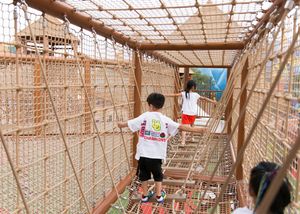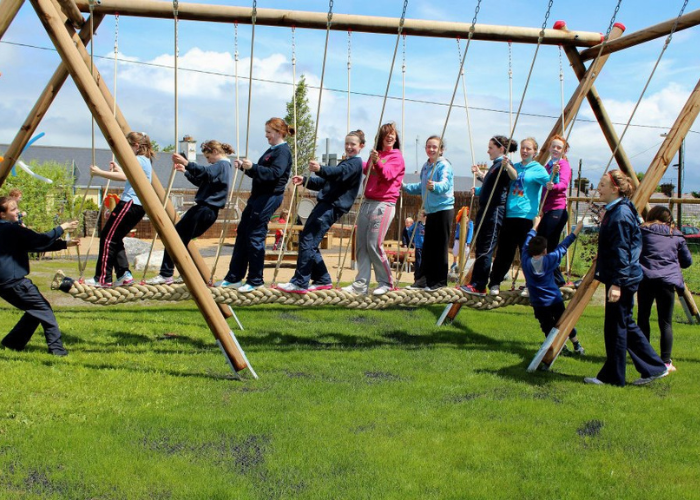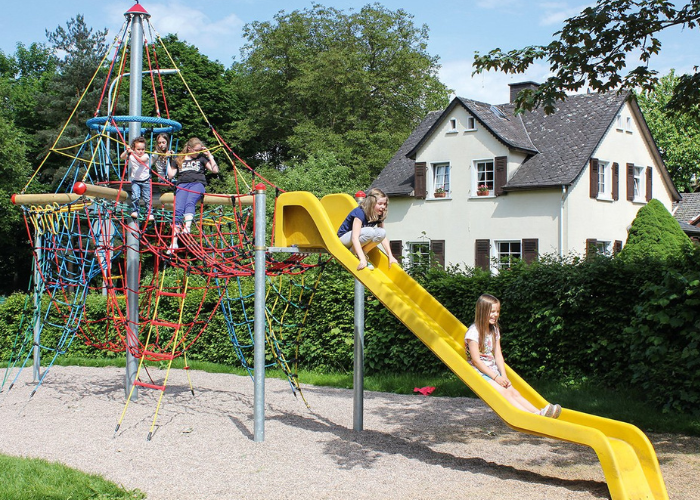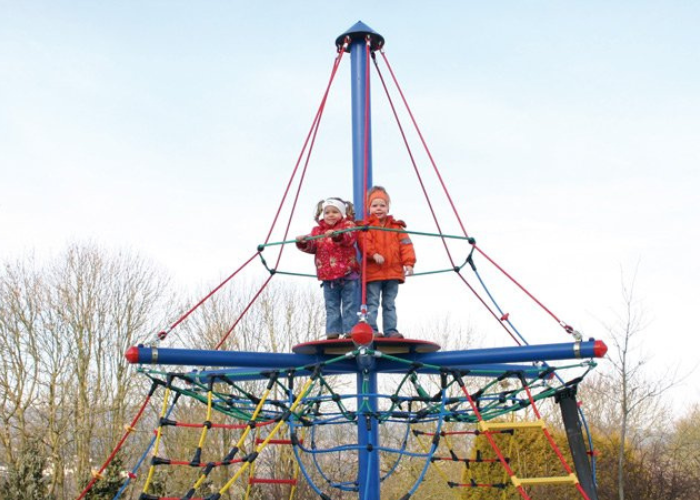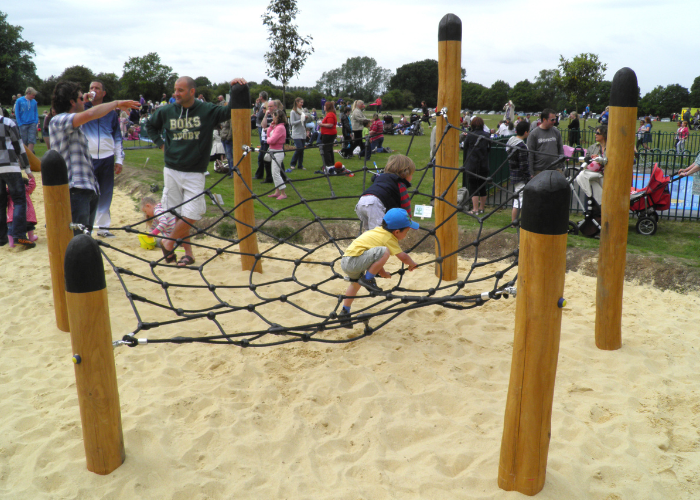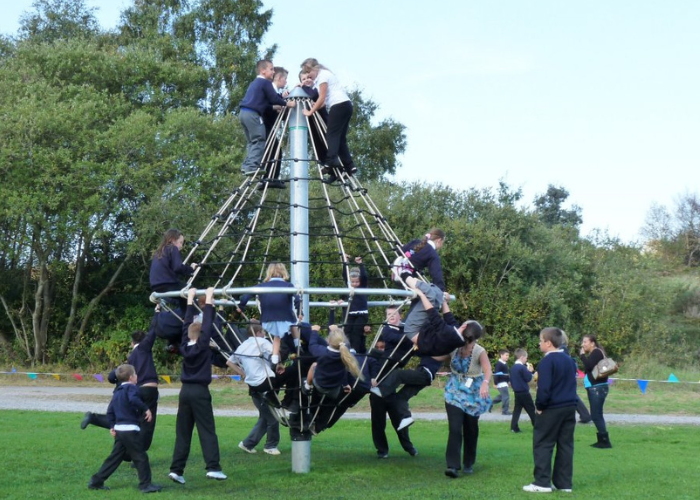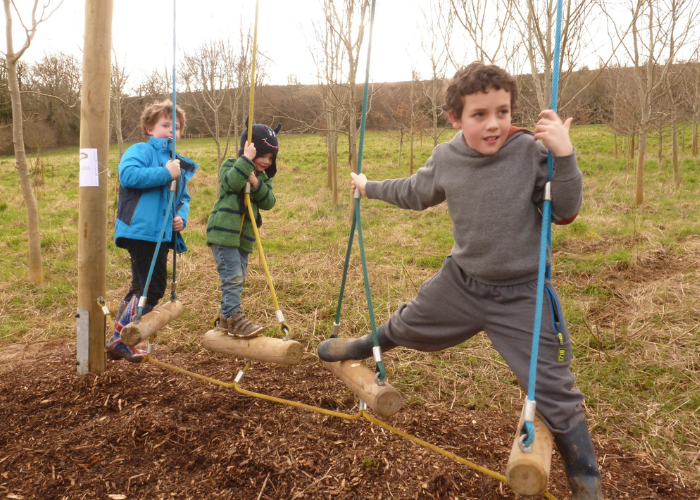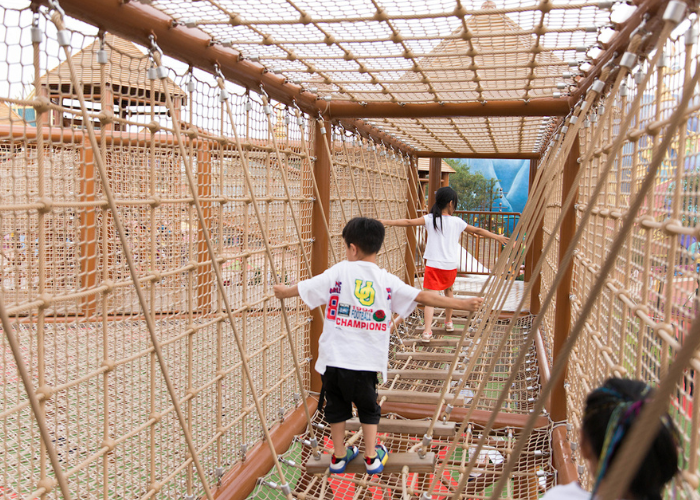How Playgrounds Enhance Public Spaces & Help Communities
There are countless ways in how playgrounds enhance public spaces, from enriching community interactions to promoting physical activity and inclusivity.
While many planning applications for large housing estates now require some form of open space or park to meet approval requirements, the benefits of a public playground go way beyond this.
Public playgrounds are vital elements in creating vibrant and liveable public spaces that benefit entire communities — far more than just a place for children to play.
If you’re investigating how a playground could benefit your own community, we’ve put together a guide to help inform your planning application or community development project plan…
Why Public Playgrounds are Important for Children
Providing opportunities for children’s play is incredibly important. While this is facilitated through compulsory PE lessons and schedules during school hours, space still must be made for this outside of education.
According to Ali Oliver MBE (Youth Sport Trust Chief Executive), “3.6 million children are still not physically active for an average of 60 daily minutes across the week”, which is the recommendation of the UK’s Chief Medical Officers.
Having access to playgrounds within a housing estate or in the centre of a town or village can help greatly in overcoming this issue. Whether play isn’t possible or accessible at home, or a child simply needs a change of scenery, having safe and well-maintained playgrounds available can make all the difference.
Boosting Physical Development
Playgrounds provide countless opportunities for active play, which helps children strengthen their muscles, improve balance, and enhance motor skills.
Activities like climbing, running, jumping, and swinging not only promote overall fitness but also contribute to better coordination and agility. These physical benefits are crucial in combating issues like childhood obesity while instilling a lifelong love for movement and exercise.
In addition to improving physical health, engaging in outdoor play helps children develop endurance and resilience as they engage their bodies in various challenges.
Encouraging Emotional Development
Playgrounds are vital spaces for children to express themselves freely, take risks in a safe environment, and build self-confidence.
Whether conquering a tricky climbing structure or trying out a new activity, these small victories boost their self-esteem and encourage a growth mindset. Playgrounds also allow children to manage their emotions as they navigate the joys and frustrations of play.
Through exploration and overcoming challenges, children learn to regulate their feelings, building emotional resilience that will serve them throughout life.
Strengthening Social Development
Play areas are invaluable in teaching children critical interpersonal skills. By interacting with peers, they learn to share, take turns, cooperate, and resolve conflicts.
These interactions are essential for developing communication skills and forming meaningful friendships. Playgrounds often act as a microcosm of the larger world, teaching children how to navigate social dynamics in a supportive setting.
These shared experiences also help foster a sense of empathy and understanding as children engage with peers from diverse backgrounds.
Instilling Community Pride
Spending time in well-designed playgrounds can instil a strong sense of community pride and belonging in children from an early age. By engaging with others in a shared and inclusive space, children come to appreciate the value of collaboration, inclusivity, and caring for communal areas.
Whether through working together to build a sandcastle or cheering on a friend attempting the rope ladder, these experiences create a foundation for teamwork and social responsibility.
Over time, children who frequently engage with their local playgrounds grow up with a deeper appreciation for the importance of maintaining and respecting shared spaces, contributing positively to the community as a whole.
Overall, playgrounds contribute to shaping well-rounded individuals who value both personal and community well-being.
Read More About the Benefits of Playground Equipment
Why Towns & Cities Need Functional Outdoor Spaces
As well as being a core feature for child development, public playgrounds greatly benefit the community in which they are built. Where playgrounds are supplemented by open green fields and spaces, it then becomes appealing to the wider community, not just children.
On a community level, outdoor spaces bring people together through activities like sports, picnics, and events, strengthening social connections and building stronger neighbourhoods.
Summer fetes, charity runs, and local markets or festivals can all be hosted in these spaces, providing opportunities for community engagement and a sense of belonging.
Green spaces are also proven to improve urban living by enhancing air quality, reducing heat, and creating appealing environments.
Having a playground within the vicinity also allows parents and carers to monitor their children and facilitate adult-led play while enjoying fresh air themselves or socialising with other parents. So it’s not just the children who benefit from outdoor spaces, but the entire community.
How to Enhance Local Communities With Playgrounds
If you’re evaluating how best to welcome and introduce a public playground into your local community, we have some tips and advice to help you get started.
1. Include Local Communities in the Design Process
Involving local communities in the design process is essential to create a playground that meets their needs and reflects their unique character.
By listening to residents, you can gather valuable insights about the features and facilities that will benefit them the most.
This collaborative approach ensures the playground is tailored to the community’s needs while creating a sense of ownership and pride, increasing the chances it will be well-maintained and appreciated over time.
To involve the community effectively, consider hosting public consultations where residents can share their ideas and priorities. Offer suggestion boxes, either in-person or online, to make it easy for people to contribute.
You could also organise design competitions for children, encouraging creativity while including elements that appeal to the space’s main users.
By providing multiple ways for people to participate, communities feel heard and valued, resulting in a playground that becomes an inclusive space for everyone to enjoy.
2. Think Outside the Box for Natural Playgrounds
Designing a playground that looks appealing is just as important as making it physically engaging. To do this, it's helpful to move away from rigid, square layouts and focus on natural, organic designs that blend with the environment.
Consider adding design elements like...
- Curved pathways
- Flowing lines
- Varying heights
- Natural materials
These things make the space more inviting and exciting, encouraging imagination.
A playground inspired by natural landscapes allows kids to explore in a way that feels natural and connects play to the outdoors.
3. Embrace Local History or Legacy in Community Playgrounds
| “Black Beard” Pirate Ship | Space Capsule |
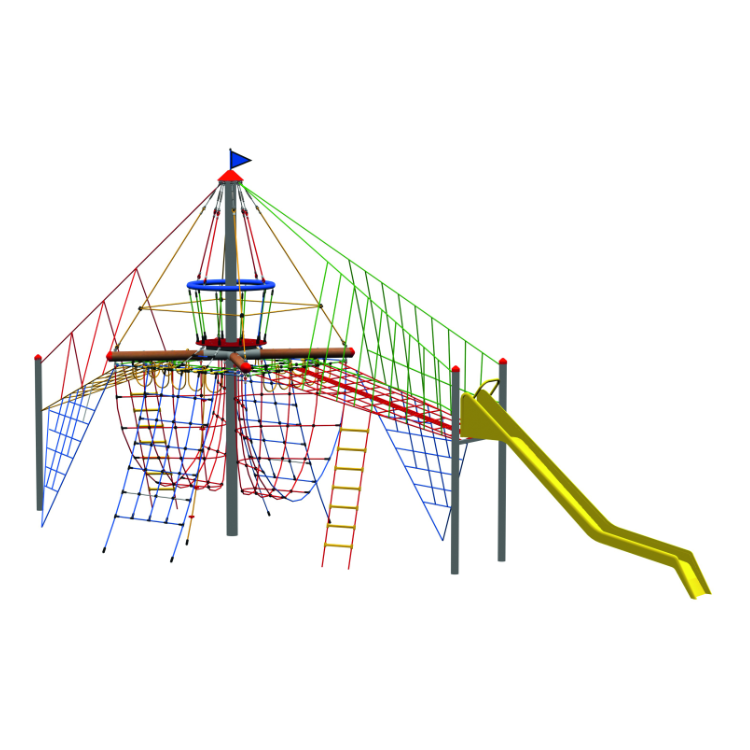 |
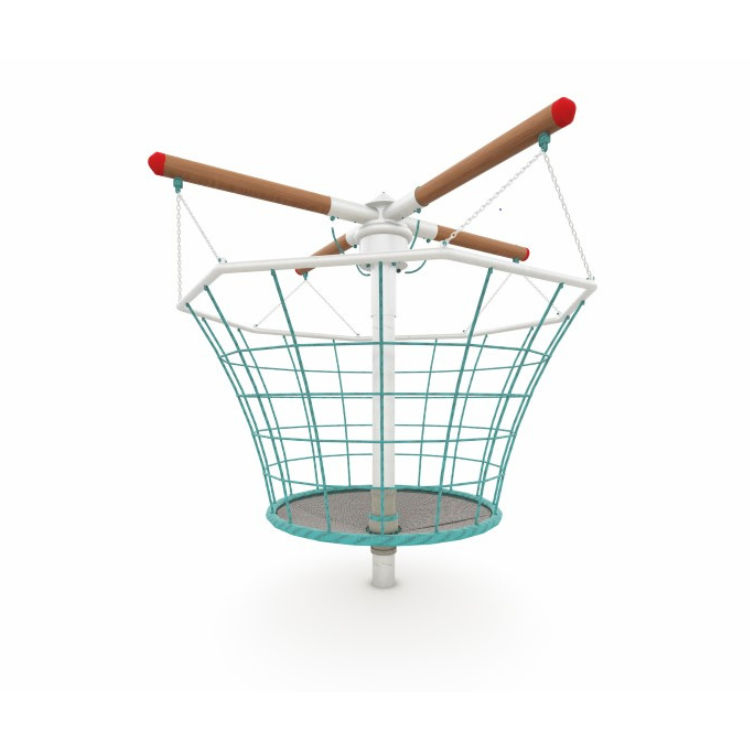 |
Incorporating local history and heritage into playground designs helps create spaces that feel meaningful to the community and foster a sense of belonging.
Designing a playground to reflect the area’s unique identity not only makes it more culturally relevant but also inspires curiosity and pride in children and their families.
For example, playgrounds near the sea can include nautical features like ship-inspired structures, sand play areas, or lighthouse towers to reflect the surroundings and encourage imaginative play.
Read about our West Bay playground build that encapsulated the spirit of the sea and the maritime history of the area!
See Our West Bay Play Area Case Study
4. Keep the User Group as Broad as Possible
Thinking about how parks help communities in terms of bringing people together, it makes sense to build a playground that multiple age groups can use.
By incorporating different levels of challenge, such as climbing structures for older kids and sand pits for younger ones, a playground can become a destination for families and friends to gather and play together.
Learn How Children Play at Different Ages
5. Remove Barriers to Accessibility
This inclusivity also extends to individuals with disabilities, as accessible design elements can be incorporated into the playground to ensure that everyone can join in on the fun.
Accessible equipment, like wheelchair-friendly trampolines, like the Rolli Trampoline and DDA-compliant swings, allows all children to play together, encouraging inclusivity and building stronger friendships. Sharing playtime experiences creates a sense of community and connection.
It's also important to choose ground coverings that support accessibility. For example, rubber surfacing provides a smooth and stable surface that's easy to navigate with mobility aids, unlike bark chips, which can be difficult to use. These design choices help ensure every child can join in the fun.
Accessible seating is just as important.
Benches with nearby wheelchair spaces or adaptable seating options allow disabled parents or carers to comfortably participate and enjoy the playground alongside their children.
6. Turn Your Playground Design into a Landmark
Incorporating local heritage into your playground design is a fantastic way to create a bespoke space that resonates with the community.
Custom play equipment inspired by regional history, culture, or iconic landmarks can turn ordinary playgrounds into memorable destinations. For instance, you could design a play structure shaped like a classic car or a vintage plane, reflecting the area's history or identity.
These unique features not only provide children with exciting opportunities for imaginative play but also serve as a source of pride for the community.
By blending art, culture, and play your playground can become a cherished local landmark that draws families together and highlights the unique character of your location.
Use Huck Play to Enhance Your Public Space
At Huck Play, we have decades of experience manufacturing and installing community playgrounds designed for people of all ages. Our expert team understands the importance of creating spaces that foster connection, creativity, and fun for everyone in your community.
Whether you have a specific vision for your playground or need guidance in bringing your ideas to life, we're here to help.
Reach out to our experienced team to discuss your needs, and we’ll support you every step of the way—from design and planning to installation and beyond.
FAQs
What Attracts People to Public Spaces?
Public spaces attract people by offering opportunities for social interaction, relaxation, and recreation. Well-designed spaces with amenities like seating, greenery, and playgrounds create a welcoming environment, fostering a sense of community and encouraging frequent visits.
What are the Seven Basic Factors for Public Space?
The seven basic factors for public space are accessibility, comfort, safety, inclusivity, functionality, aesthetics, and sustainability. These elements ensure spaces are welcoming, practical, and enjoyable for diverse groups, promoting community engagement and enhancing overall urban quality of life.
Do Public Parks Build a Sense of Community?
Yes, public parks foster community by providing shared spaces for interaction, recreation, and events. They encourage social connections, inclusivity, and a sense of belonging, making them vital for building relationships and strengthening neighbourhood ties.
How Do You Improve Community Engagement With Outdoor Play Developments?
Prioritise accessible, inclusive designs, organise community events and incorporate features like playgrounds or exercise equipment. Engage residents in the planning process to ensure developments meet their needs, fostering participation and strengthening connections through tailored enjoyable outdoor spaces.

